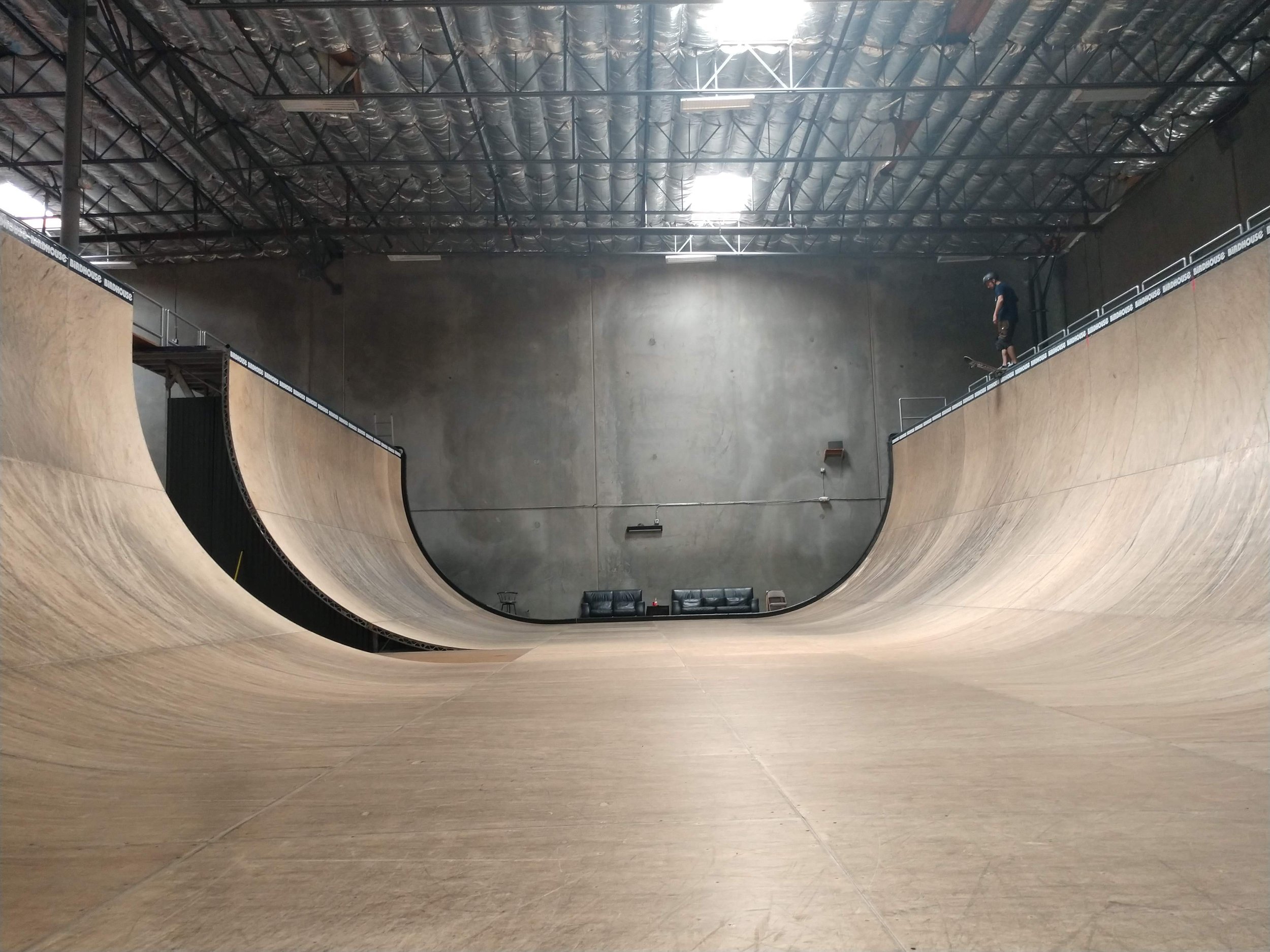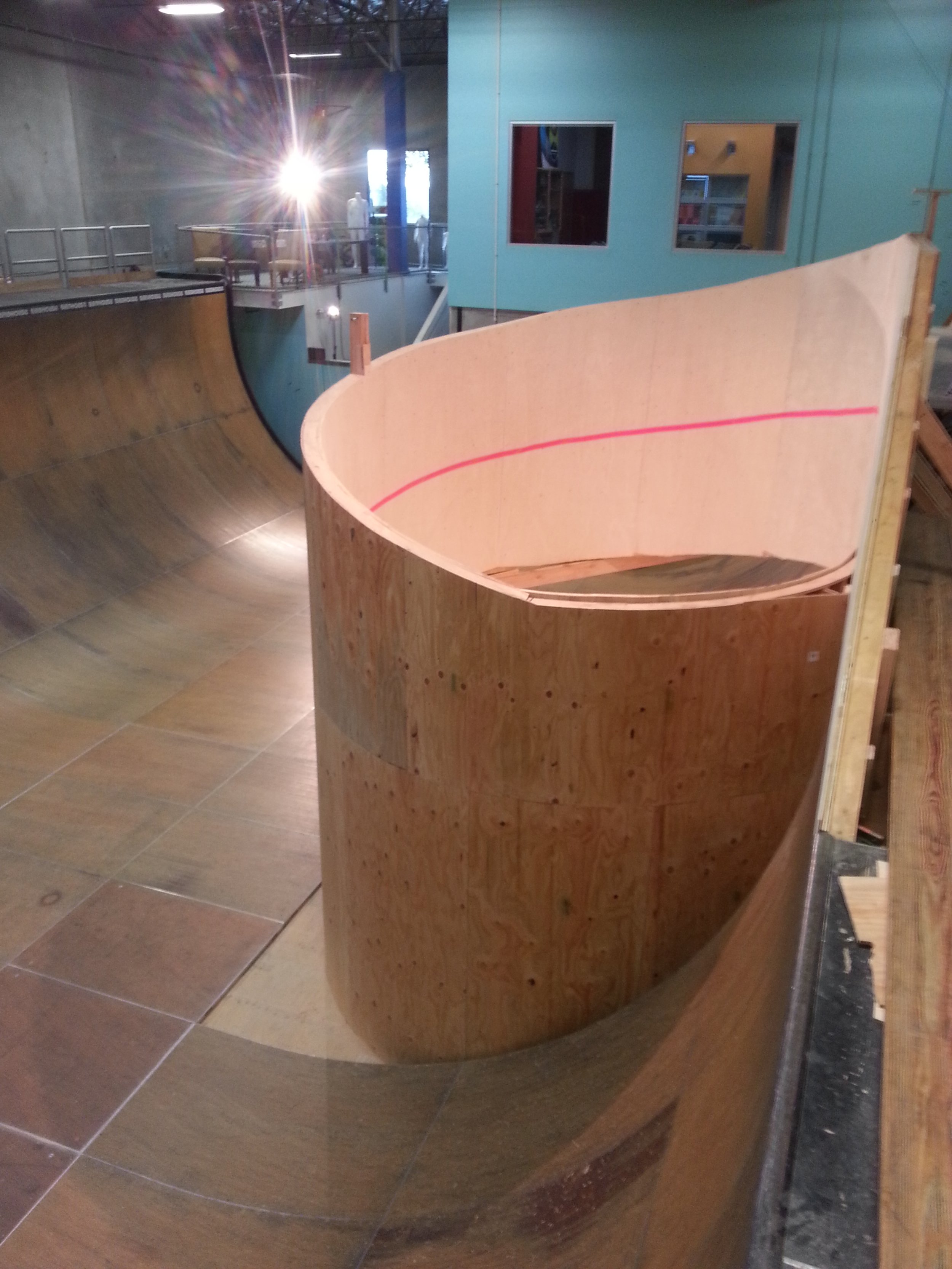The Ramp
For about 20 years I worked to get public skateparks produced in the United States. For about 10 years of that time my office was in the building that housed Tony Hawk’s vert ramp.
The warehouse is a concrete tilt-up deal with one end carved out for offices. Around the ramp is some factory shelving for inventory, a small “street” course, and event gear.
What is its form? It’s a flat-bottomed U-shape. The decks are 13-and-a-half feet above the bottom and the radius of arc is about 15-feet. The last 12 or 14 inches at the top of the ramp are straight up and down. That’s where the “vert” (for vertical) part of “vert ramp” comes from.
For the most part things around the ramp just carried on like normal.
While I enjoyed skating the ramp, it didn’t call to me the way some other kinds of skateboarding terrain did. Vert ramps have always been kind of exclusive; rare and private. Vert skating, as a subcategory of skateboarding overall, was characterized by aerial tricks. The slams could be catastrophic and I know lots of people that were seriously injured skating this type of terrain.
Any time something with wheels is left on the ramp it triggers the imagination.
Sometimes the ramp would generate a big session. People would mill around the edges, phones out, capturing the runs. From my desk I could hear the occasional bails, the boards flying. On most days, however, the activity was relatively subdued; just one or two skaters sharing the ramp.
The ramp is an elegant shape and color. The warehouse is warm.
For the most part the ramp was quiet. Often it was just Tony staying loose. He was often working on new tricks. It was an inventive laboratory in that way. Sometimes a whole new element was introduced to the ramp that afforded new kinds of interactions.
The ramp was often reconfigured to meet some design goal. This “corkscrew” structure was difficult to engineer and took lots of trial and error with the crash bags before the real effort.
I think the ramp has a lot of character and so there are lots of fun visual conversations possible.
As my time working in skateboarding matured I began to feel conflicted about the complicated interactions between skateboarding youth and the companies that supported and profited from their dedication. That cynicism became a factor in my diminishing job satisfaction.
This space hosted a small sound stage for video production before it became Tony’s office. The window overlooks the warehouse where the vert ramp is located. You can see the decks and railings through the window.
The ramp was an ideal design for skateboarders as well as BMX riders. The black marks are where BMX tires landed on the ramp’s face.
I’m grateful for the opportunity to do good for skateboarding young people and the people who love them. Being supported to pursue skatepark advocacy on a national level was an amazing and exquisite experience.







